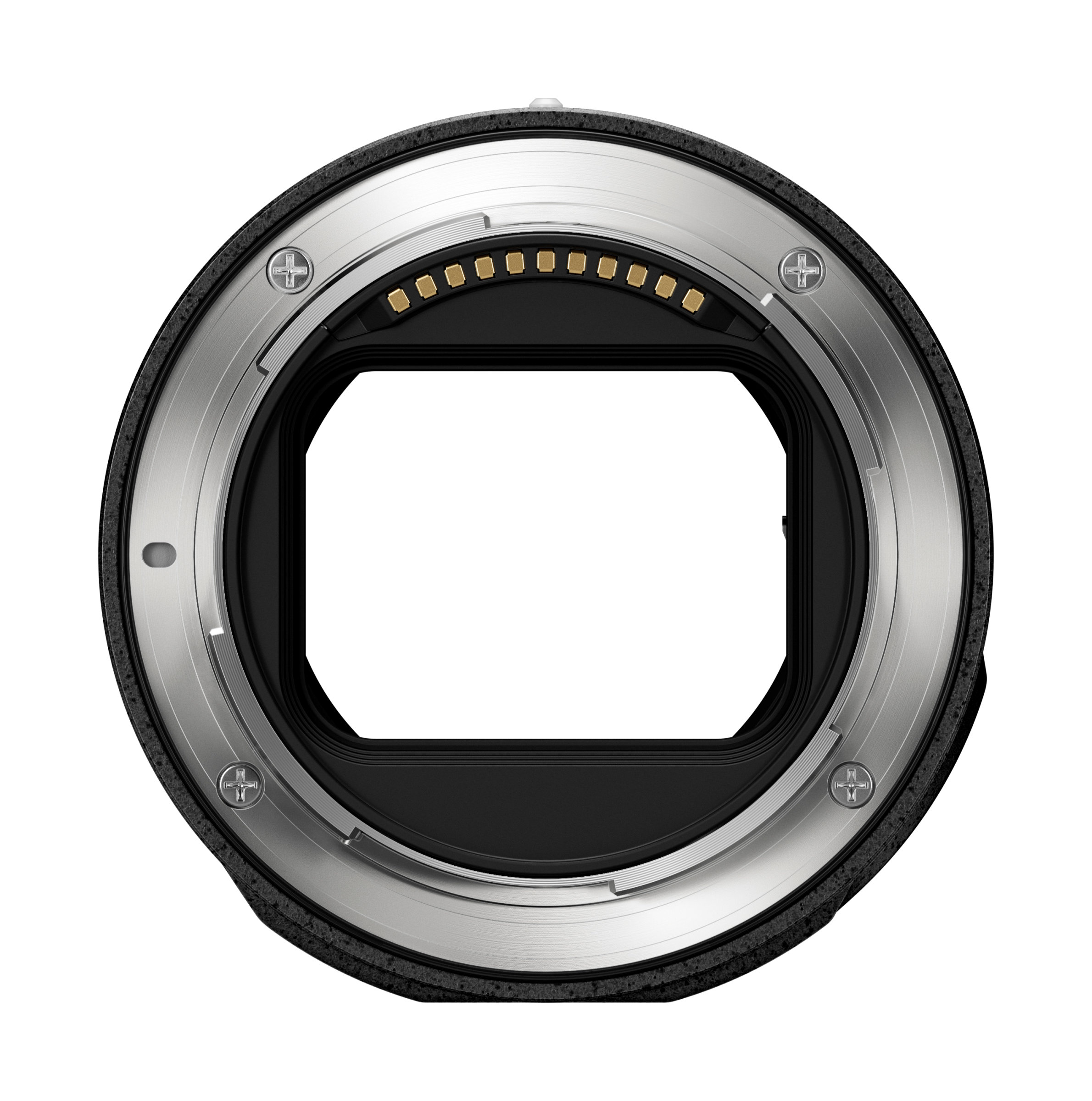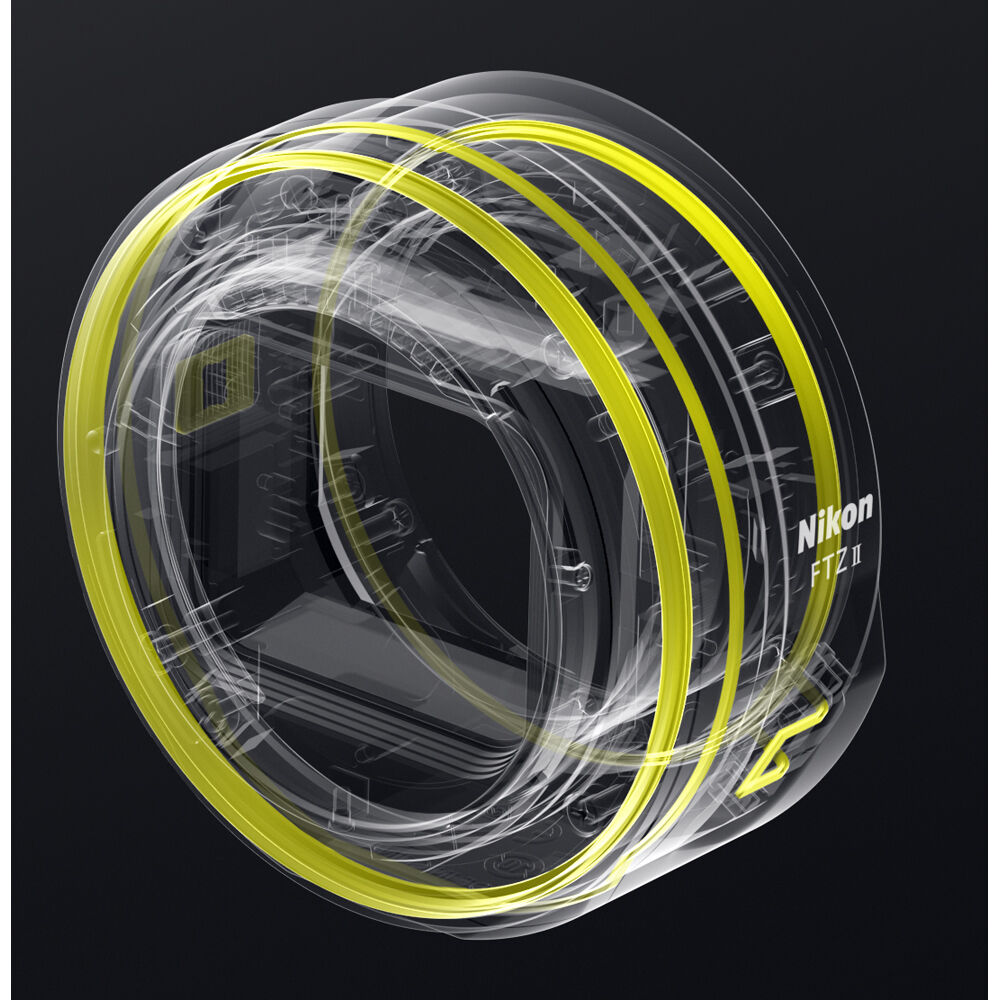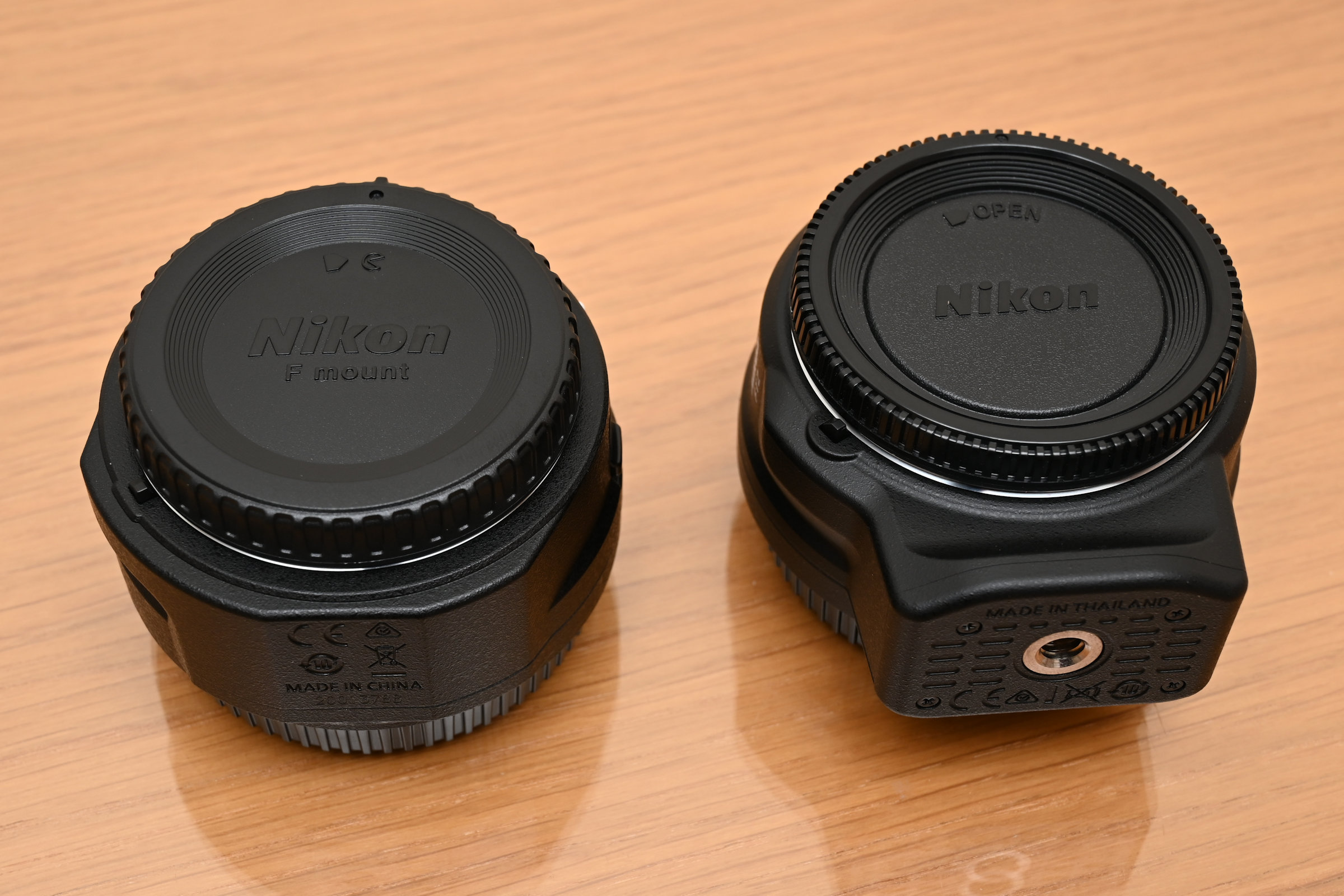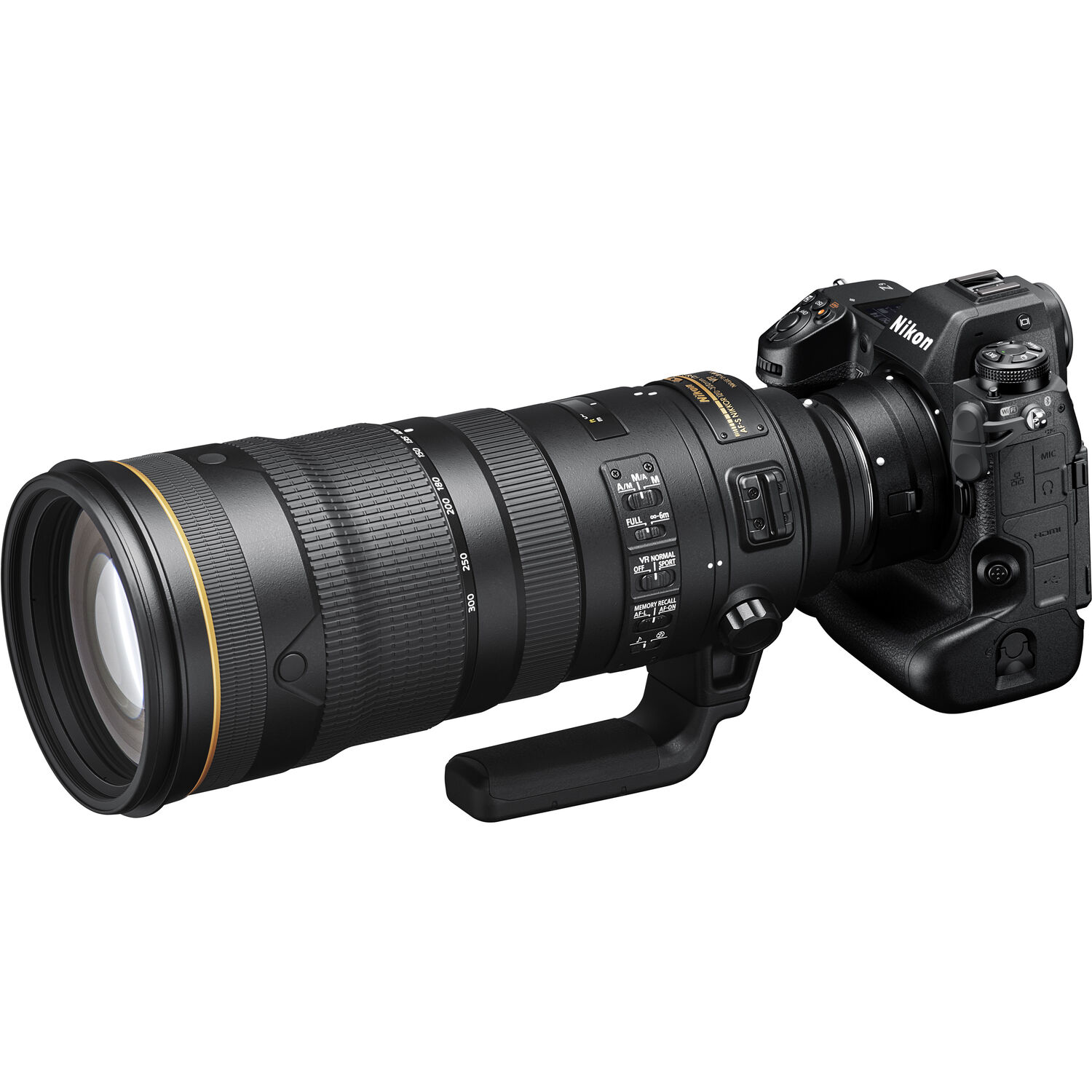Digital Camera World Verdict
The only real ‘upgrade’ that the Nikon FTZ II offers over the original edition is that it’s a more rounded design. The protrusion that included a tripod mounting socket has been lopped off, which is both good and bad. If you’re lucky enough to have a Nikon Z9 camera, which features an integral vertical grip, you’ll now get unrestricted portrait-orientation shooting without the mount adapter getting in the way. On the other hand, the loss of the mounting socket results in a poorer balance when using medium to large sized lenses that don’t feature their own tripod mounting collar.
Pros
- +
Compact and lightweight
- +
Improved handling in some cases
- +
High-end, weather-sealed build
Cons
- -
Incompatible with some lenses
- -
No autofocus with ‘AF’ lenses
- -
No tripod mount socket
Why you can trust Digital Camera World
The Nikon FTZ II adapter lets you mount Nikon F mount DSLR lenses on its newer Z mount mirrorless cameras. But is the updated new Nikon FTZ II adapter worth getting? In a word, yes. In three words, yes and no. It’s definitely worth the investment if you’ve switched to a mirrorless Z-series camera from a Nikon DSLR, and have some F-mount lenses that you’d like to keep using.
It’s also useful for plugging the remaining gaps in Nikon’s Z-mount lens line-up with F-mount substitutes. For example, there’s no native Z-mount compact telephoto zoom for full-frame cameras, nor a fairly inexpensive 105mm macro lens. F-mount lenses like the Nikon AF-P 70-300mm f/4.5-5.6E ED VR and Sigma 105mm f/2.8 EX DG OS Macro fit the bill nicely, while the 125g weight and 70mm length of the FTZ don’t add much bulk.
However, if you’ve already got the original FTZ mount adapter, which has now been discontinued, the only real difference is that the Mark II shaves off the tripod mount protrusion. The new mount adapter is therefore literally more well-rounded, as well as being a little smaller. A major plus point, if you’re shooting with a Nikon Z9, is that the FTZ II doesn’t restrict access to the camera’s built-in vertical grip, which is a niggle with the original version. With other Z-series cameras, however, the integral tripod socket of the older mount adapter can be a nice thing to have, as it enables a better balance when using fairly big, heavy lenses that don’t have their own mounting collar.
Key features
Although the Mark II lacks a tripod mounting socket, using the camera’s own socket with either edition of the FTZ enables swapping between Z-mount and F-mount lenses while leaving the camera fixed on a tripod or monopod, which can be a time-saver.
As with the original FTZ, you get full compatibility with autofocus, exposure control and optical VR (Vibration Reduction) for all of Nikon’s AF-P and AF-S lenses. Nikon says that AE (Auto Exposure) shooting is available for 360 Nikkor F-mount lenses from the older AI type onwards, and AF/AE works with 94 AF-P, AF-S and AF-I lenses.
However, both versions of the FTZ lack a mechanical autofocus screw-drive (also omitted in all Z-series cameras), so you can only focus manually with ‘AF’ lenses like the AF 50mm f/1.8D, which don’t have a built-in motor. These lenses rely on in-camera motors featured in most F-mount DSLRs, apart from lower-end models including D3xxx and D5xxx cameras. The electronic rangefinder of Z-series cameras is enabled when shooting with AF-G and AF-D type lenses, but not with other AF lenses, nor PC (Perspective Control), AI and AI-P lenses. Some older lenses including all non-AI lenses are completely incompatible and can’t be used with FTZ adapters.
Build and handling
The construction is of a very good standard, based on metal mounting plates and a magnesium alloy barrel. Like the original, the FTZ II is tough but lightweight. Extensive weather-seals are included, assuring the same high resistance to dust and moisture as the Z9 camera.
The more streamlined and rounded shape of the FTZ II shaves 10mm off the height and gives a 10g weight reduction, compared with the original version. These aren’t significant amounts and you’re only likely to notice a real improvement in handling when using a camera with a vertical/battery grip.
Performance
There’s no glass in either of the Nikon FTZ mount adapters so image quality is completely dependent on the F-mount lens that you’re using. Crucially though, the performance of any compatible lens is in no way degraded by using it with either FTZ edition. Image quality is at least as good as when using a DSLR and autofocus is generally as fast. Indeed, autofocus tends to be more consistently accurate when using the sensor-based autofocus system of a mirrorless camera, compared with the separate phase-detection autofocus module of a DLSR.
For optically stabilized ‘VR’ lenses, you get the same level of performance on a DX format Z-series camera like the Z50 and Z fc, as you would on a DSLR. With a full-frame Z body, the overall effectiveness is enhanced, thanks to the combination of optical VR and in-camera stabilization.
The best camera deals, reviews, product advice, and unmissable photography news, direct to your inbox!
Verdict
If you’ve switched from a Nikon DSLR to a Z-series mirrorless camera, the FTZ II can come in very useful. There are still a few types of lens that aren’t available in native Z-mount and, even if they are, you might not want or be able to afford to trade in all of your F-mount lenses for Z-mount replacements. For newer types of Nikon F-mount lenses, as well as for most independently manufactured F-mount lenses, the FTZ II gives them a new lease of life for the mirrorless era. As with the original FTZ, however, you still won’t be able to autofocus with AF-type lenses that lack an internal drive system. There can also be incompatibility issues when using independently manufactured F-mount lenses with a mirrorless body, via both FTZ editions.
Read more:
• Best Nikon cameras
• Best Nikon lenses
• Best Nikon Z lenses
• Best lenses to get
Matthew Richards is a photographer and journalist who has spent years using and reviewing all manner of photo gear. He is Digital Camera World's principal lens reviewer – and has tested more primes and zooms than most people have had hot dinners!
His expertise with equipment doesn’t end there, though. He is also an encyclopedia when it comes to all manner of cameras, camera holsters and bags, flashguns, tripods and heads, printers, papers and inks, and just about anything imaging-related.
In an earlier life he was a broadcast engineer at the BBC, as well as a former editor of PC Guide.








